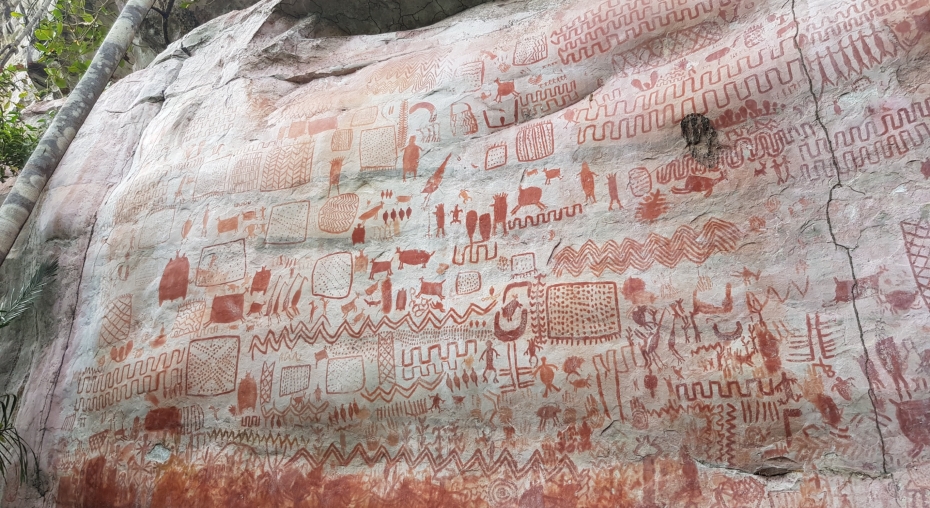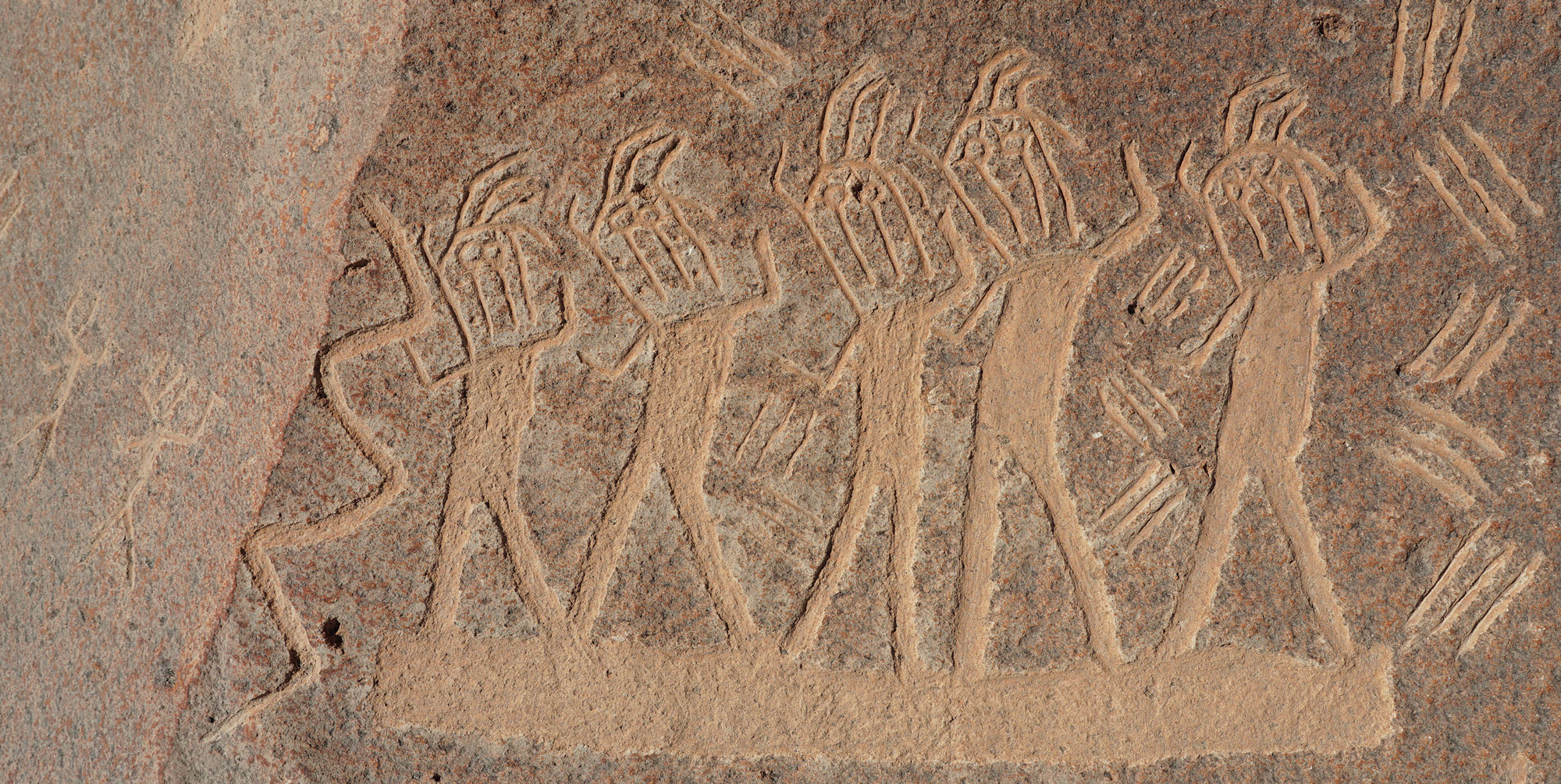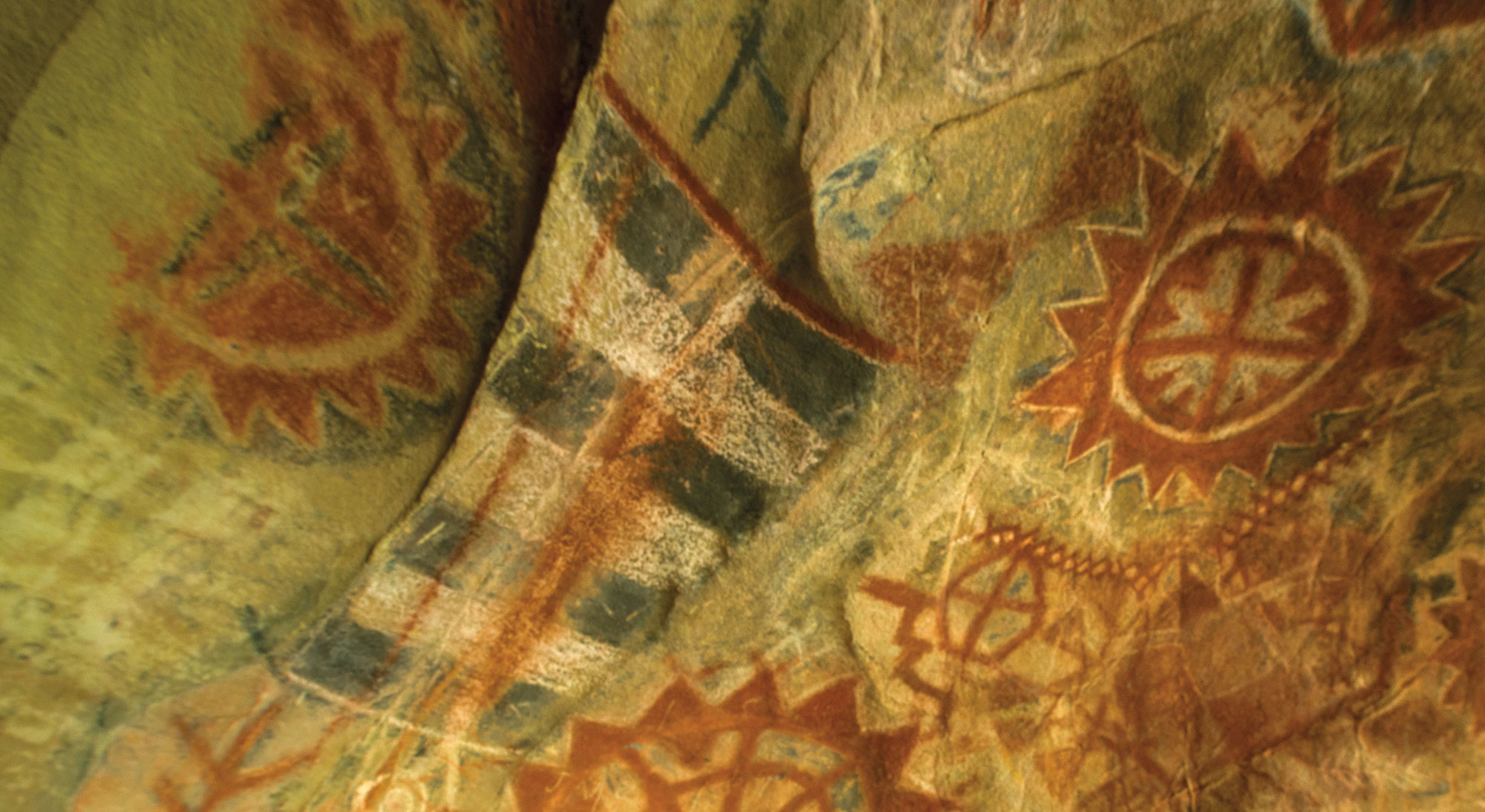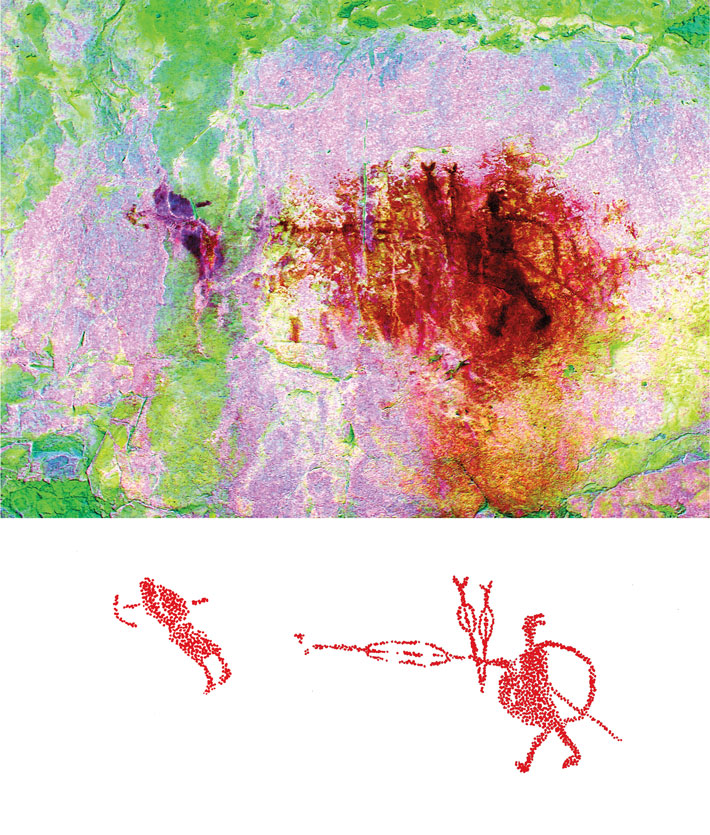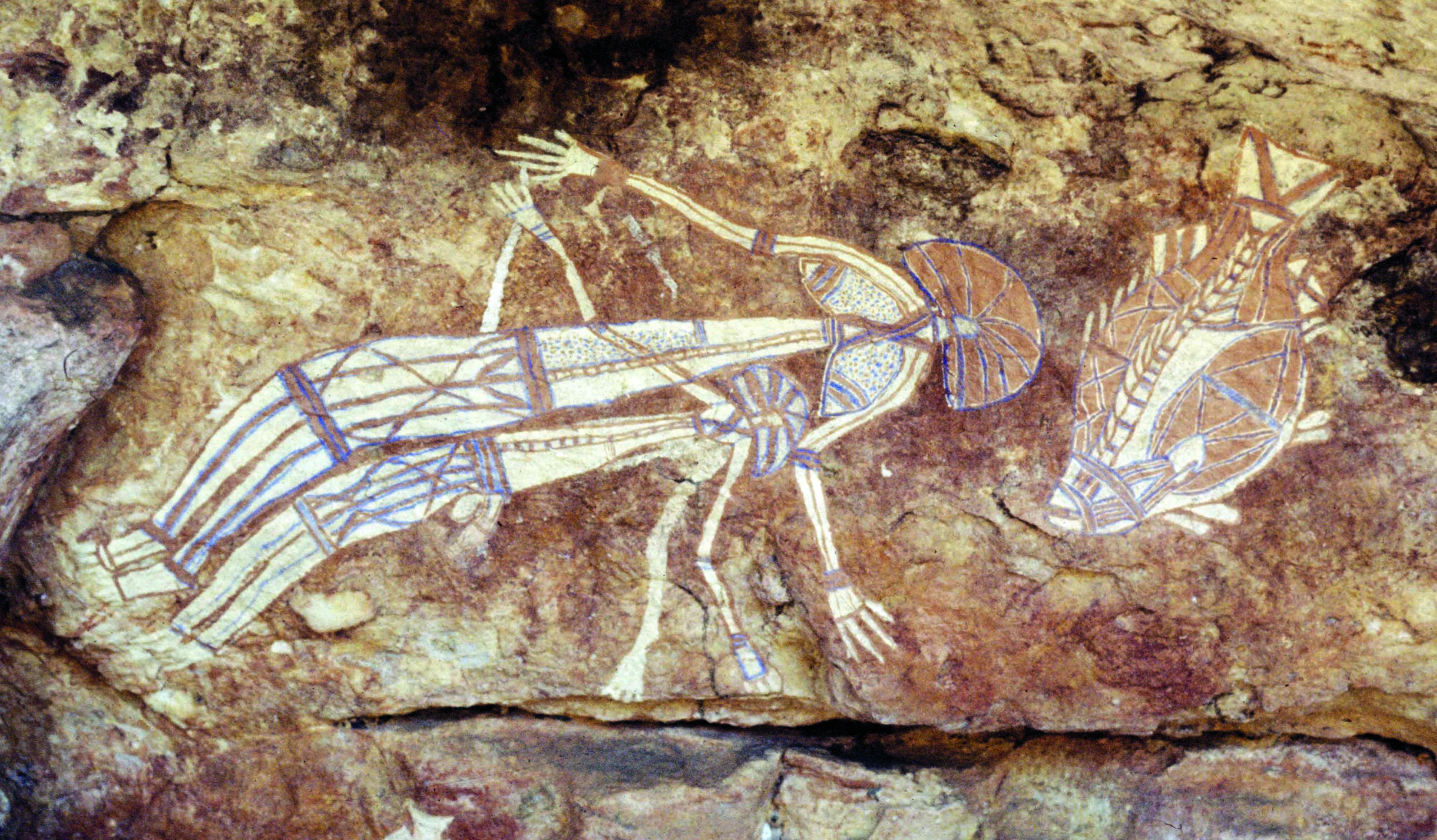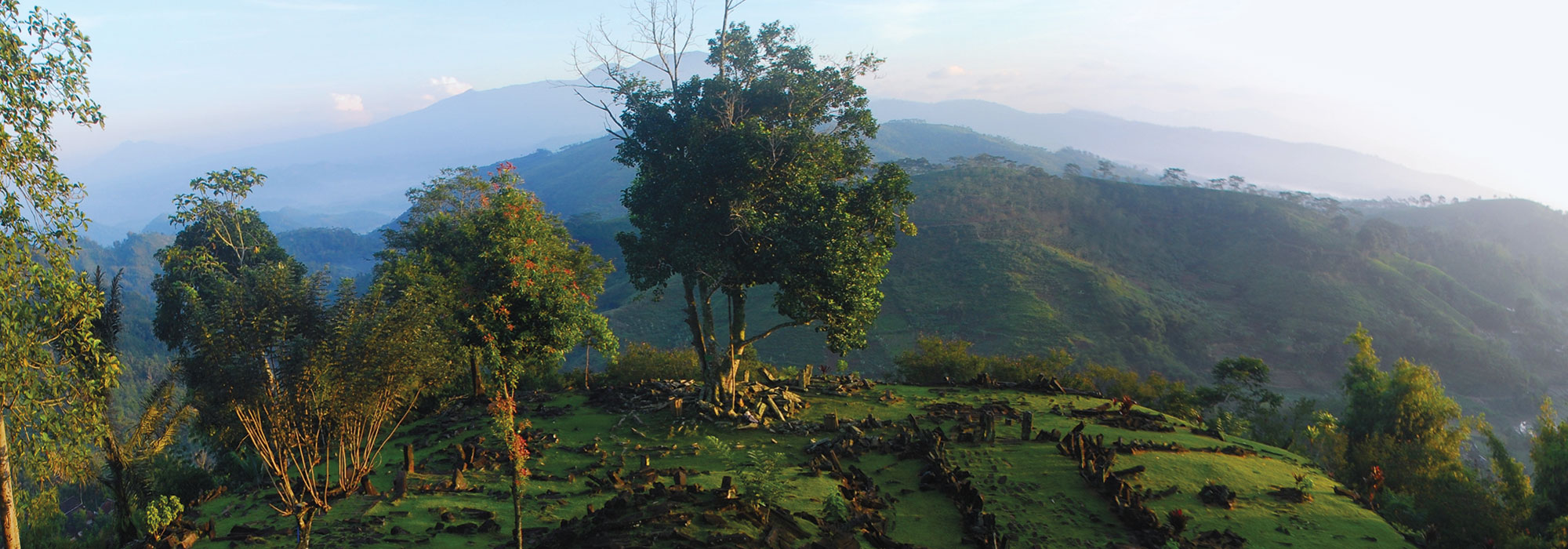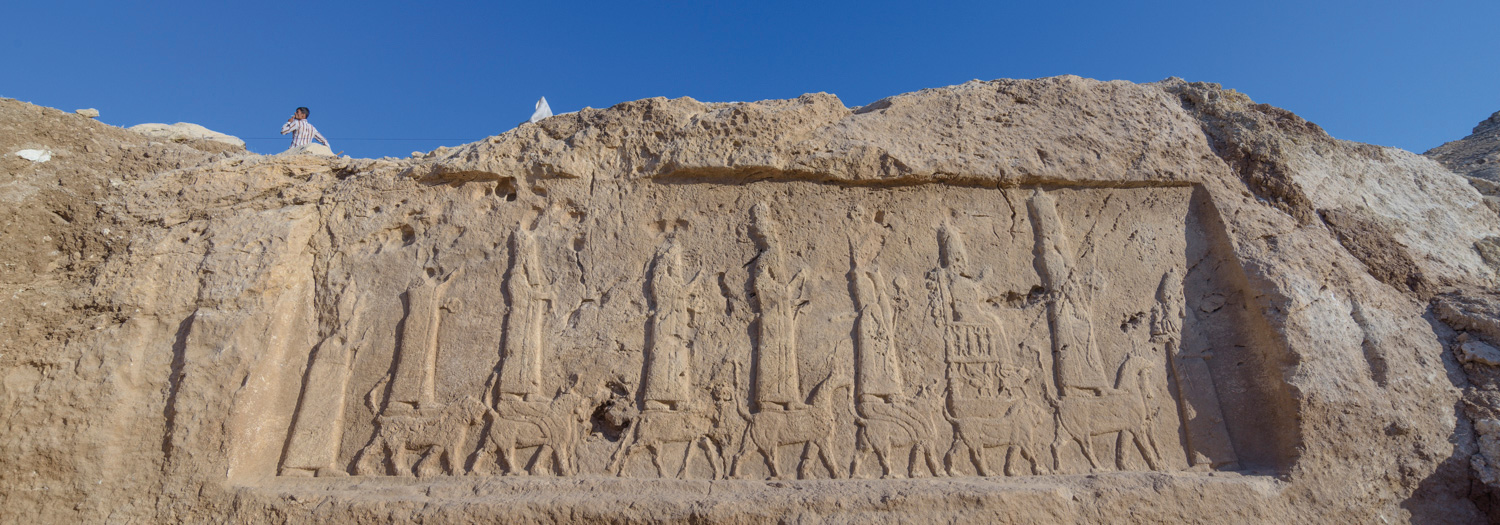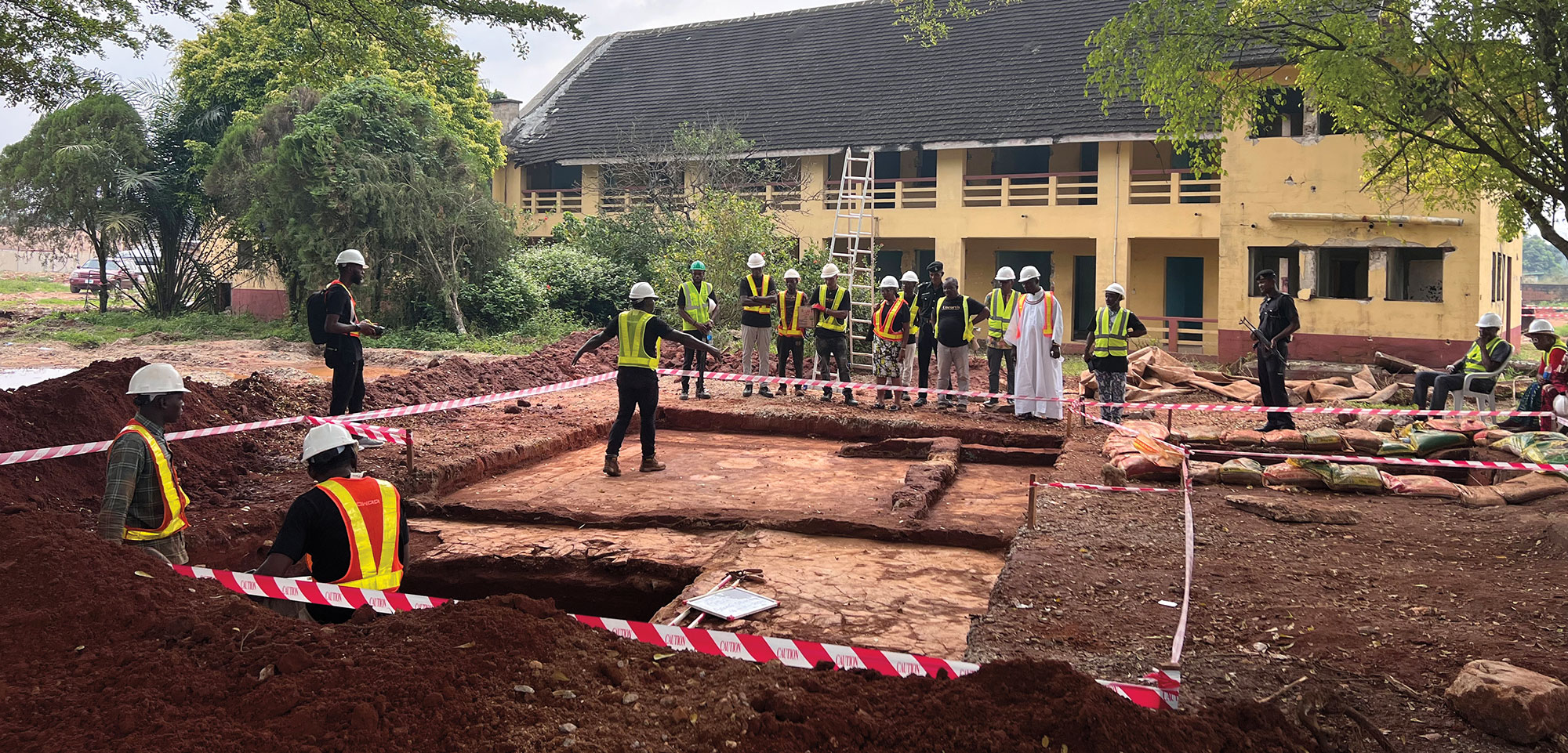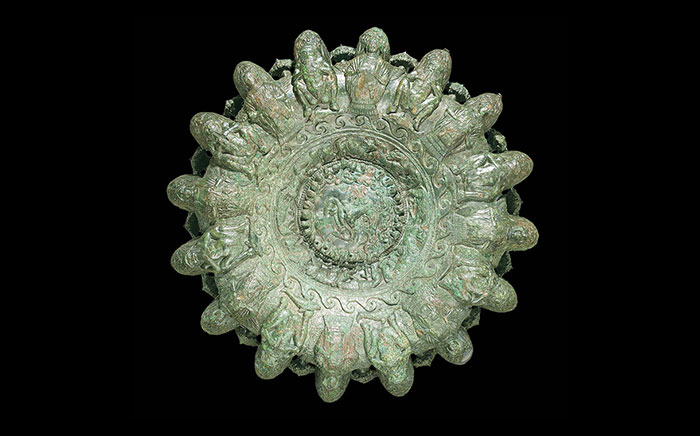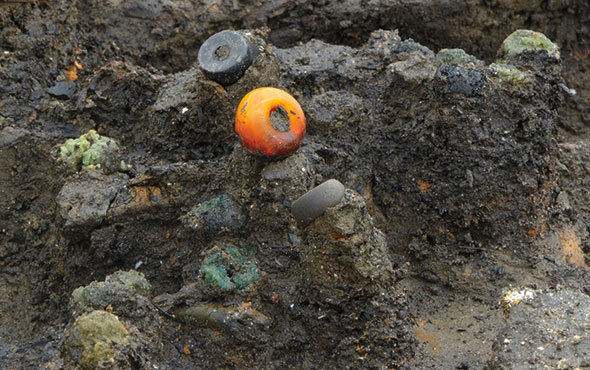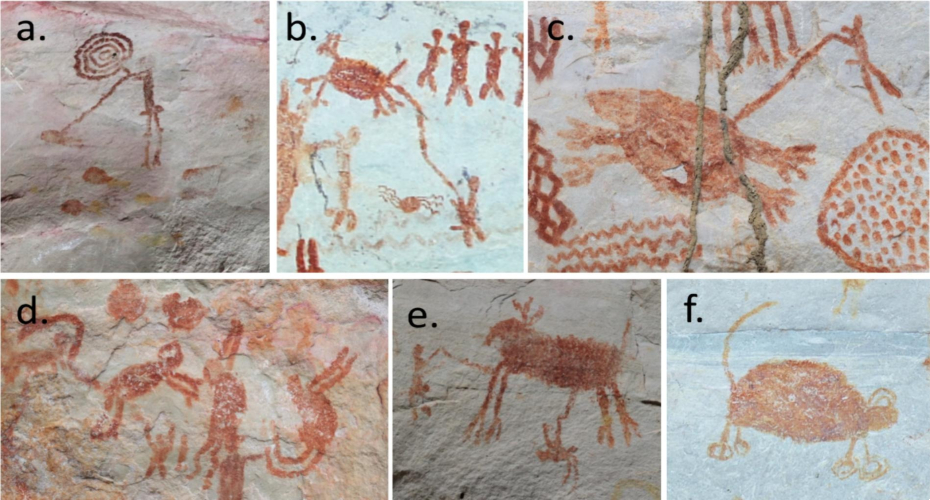
MEDELLÍN, COLOMBIA—According to a statement released by the University of Exeter, an international team of researchers, including Mark Robinson and Jose Iriarte of the University of Exeter and Javier Aceituno of the University of Antioquia, compared images of animals found in the Colombian Amazon on Cerro Azul in the Serranía de la Lindosa with animal bones uncovered in nearby archaeological excavations. The rock art images, drawn with ocher on 16 rock panels on a remote hilltop, are estimated to be about 12,500 years old. Study of the animal remains revealed that the prehistoric population consumed a diverse diet of fish, mammals, and reptiles. But the proportions of the numbers of animal bones did not correspond with the prevalence of 22 different animals, such as deer, birds, peccary, lizards, turtles, and tapir, represented in the more than 3,000 images on the six rock art panels in the study. Robinson and his colleagues therefore suggest that the artwork is not about hunting. Rather, the researchers noted that some of the figures combine human and animal characteristics. They think that the artwork may reflect a complex mythology of transformation between animal and human states, perhaps similar to mythologies present within modern Amazonian communities. Read the original scholarly article about this research in Journal of Anthropological Archaeology. For more on the rock art of South America, go to "The Song in the Stone."


